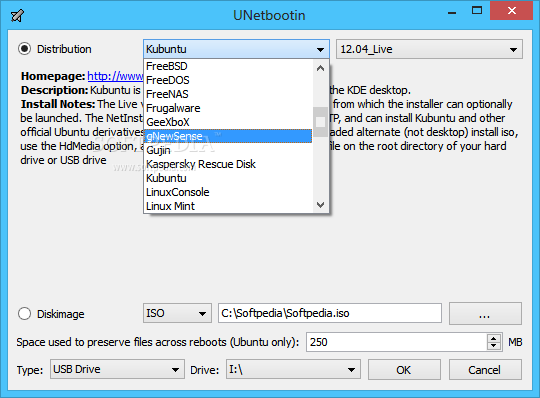

But the same techniques for using persistence should apply to it, as it's mostly an Ubuntu rip-off with proprietary codecs and desktop UI installed, while still using Ubuntu repos and binaries without recompiling the software packages themselves. Have you checked to see if unetbootin created a file named casper-rw in the root of a FAT32 formatted partition on the USB Flash drive? Or, if not, have you checked to see if an ext2 partition named casper-rw exists?Įither technique should work (USB flash drive formatted as FAT32 with a zero filled file named casper-rw in the root, or a separate partition named casper-rw that us setup as ext2 that is also zero filled to start with.Īre you sure you are using a current version of unetbootin, and sure that the flash drive was formatted as FAT32 when using it to setup a USB flash drive to boot into Linux Mint? If it was not formatted as FAT32, that could explain your issues.Īgain, I do not use Linux Mint for anything, and have not even installed it for others in years. Here is one of many articles about using that technique with Mint: See one of many articles about that file here:īut, instead of using a file named named casper-rw, an ext2 formatted partition named the same way (casper-rw) can also be used for persistence with Ubuntu based distros. That is what should have occurred using a utility like Unetbootin if you selected an ubuntu based distro, and checked the box to use persistence, and set the space to be used for persistence (a file named casper-rw should have been created in the root of the FAT32 file system being created).ĭo you see a file named casper-rw in the root on that FAT32 flash drive?Ĭasper-rw should be a zero filled file that Ubuntu based live distros mount and use as a loop device for persistence purposes. Note that this is not a file named casper that is flagged with read/write permissions. But, Ubuntu (and official derivatives of it like Kubuntu and others) will look for a zero filled file named casper-rw,in the root of a USB flash drive formatted as FAT32. Gvfsd-fuse on /run/user/999/gvfs type fuse.gvfsd-fuse (rw,nosuid,nodev,user=mint)

Tmpfs on /tmp type tmpfs (rw,nosuid,nodev)īinfmt_misc on /proc/sys/fs/binfmt_misc type binfmt_misc (rw,noexec,nosuid,nodev) dev/loop0 on /rofs type squashfs (ro,noatime) Tmpfs on /run type tmpfs (rw,noexec,nosuid,size=10%,mode=0755) Udev on /dev type devtmpfs (rw,mode=0755)ĭevpts on /dev/pts type devpts (rw,noexec,nosuid,gid=5,mode=0620) Sysfs on /sys type sysfs (rw,noexec,nosuid,nodev) Proc on /proc type proc (rw,noexec,nosuid,nodev) Maybe Mint is not supported for this, though derived from ~ $ mount | grep -v none Although many of them say read-write, in particular /cow where /home resides, there was no persistence after reboot.

#Unetbootin windows 7 iso#
The Distribution selections go up to 17.2_Live_圆4 only, so I selected Diskimage instead and used a local ISO for Linux Mint 17.3 圆4. I want persistent space, so I selected 2GB (2048MB) in the "Space used to preserve files across reboots, Ubuntu only" widget.
#Unetbootin windows 7 windows 7#
(FAT32 goes up to 2TB with default sector size, but Windows 7 refuses to create a FAT32 partition larger than 32GB.) After downloading Fat32 Formatter (highly recommended!) and reformatting a 64GB USB drive from exFAT to FAT32, I was able to run UNetbootin to create a bootable image from Linux Mint ISO on the USB drive.


 0 kommentar(er)
0 kommentar(er)
